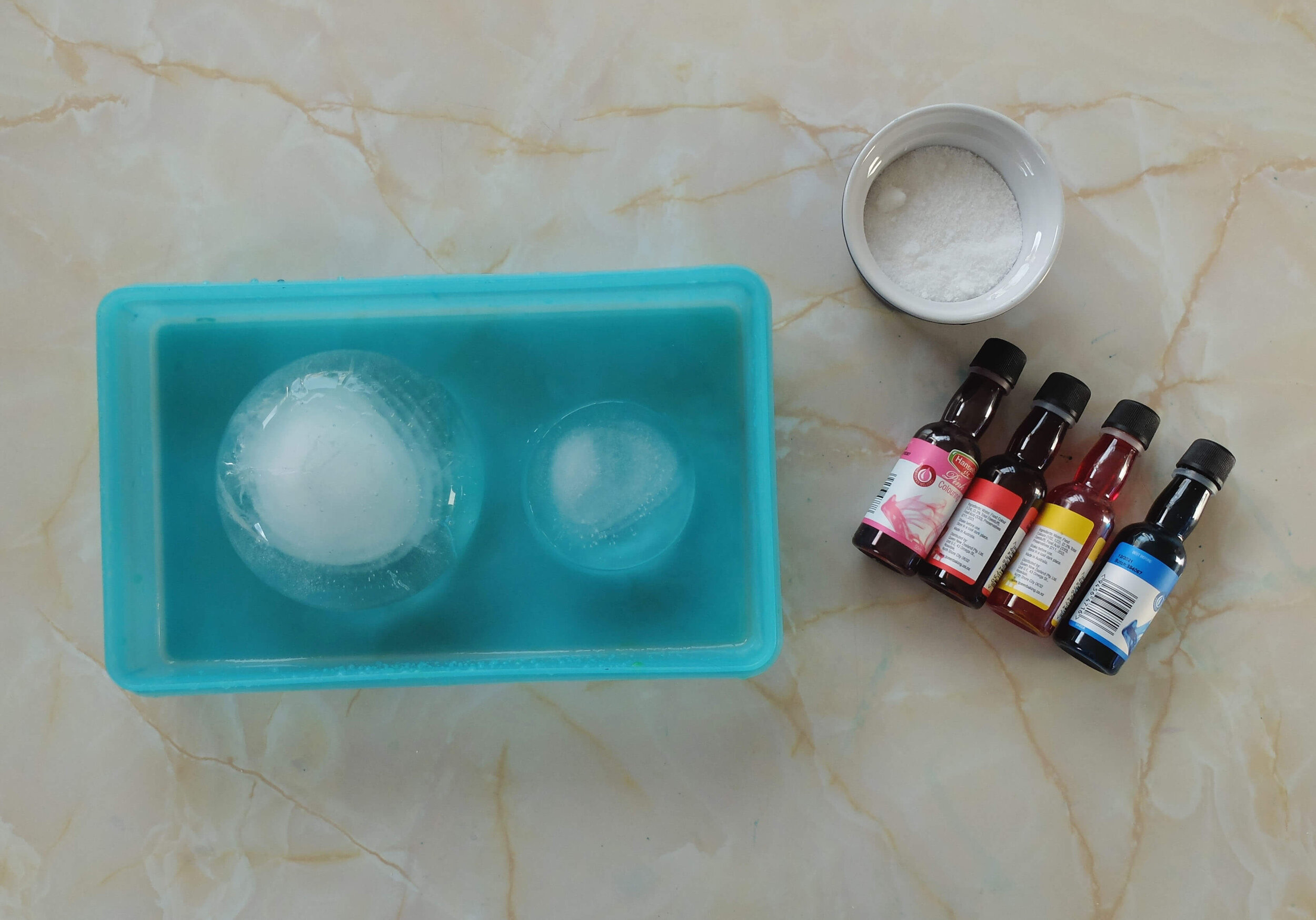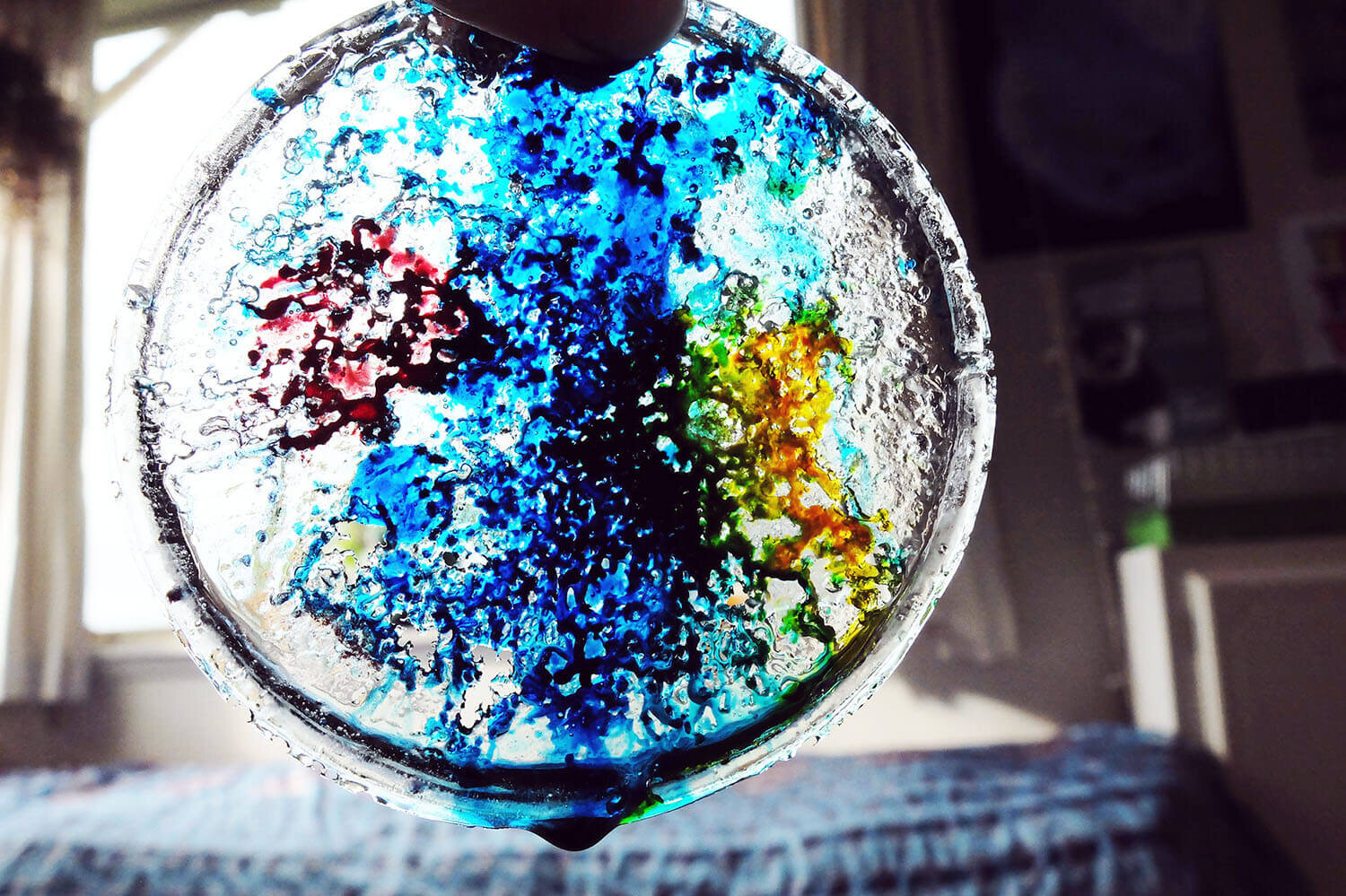Coloured Ice Science Experiment
It’s time to conduct your own icetastic experiment and delve into the science behind it.
In this artistic ice experiment, we use a splash of colour to reveal what happens to ice when you add salt to it.
What you need:
Food colouring
Bowls/containers
Water
Salt
Large container
Optional for minimal mess: Plastic gloves and colour droppers
What to do:
Freeze water in a variety of freeze safe bowls and containers overnight.
Ease the frozen shapes out of the containers by running them under warm water, or leaving them out to melt around the edge.
Arrange the ice shapes in a large container, making sure it will be deep enough to catch all the melted water.
Sprinkle salt onto the ice.
Watch and listen. Is it cracking or changing the ice in any way?
Now, add a drop of food colouring to the ice and watch as it runs into the channels and cracks that the salt has made.
Other experiment ideas:
Here are a few ideas to help you to observe, question and experiment:
Add more salt to one area of the ice and see what happens.
Add a new colour to the ice.
Turn the ice shape upside down to see all of the colourful channels and patterns that have formed inside the ice.
Hold the ice shape up to the sun to really appreciate all of the intricate marks and colours you have created.
Record your observations with drawings, photos and notes.
What we learn:
To understand how this experiment works we need to know a bit about freezing points.
A freezing point is the temperature a substance begins to change from a liquid to a solid.
Freezing Point of Water
The freezing point of water is 0 degrees Celsius, so when water (a liquid) reaches this temperature it will start to change to ice (a solid).
Salty Science
When you add salt to ice or water it lowers it’s freezing point, causing the ice to melt. This happens because the salt molecules get in between the molecules of the water, which makes it harder for the water molecules to bond together into a rigid structure (ice).
Fun Facts:
Ice melts at 0 degrees Celsius which is the same temperature that water freezes at.
Salt is made up of Sodium (Na) and Chloride (Cl-)
Water is made up of Oxygen (O) and Hydrogen (H)
When roads and footpaths get icy it gets very slippery! Salt is often used to help the ice melt faster, making paths and roads safer for people to travel on. But, it’s not just salt!
Many foreign substances such as alcohol and sugar will have the same affect as salt. Salt is chosen to use on the roads and streets because it is cheaper and there is more of it.













